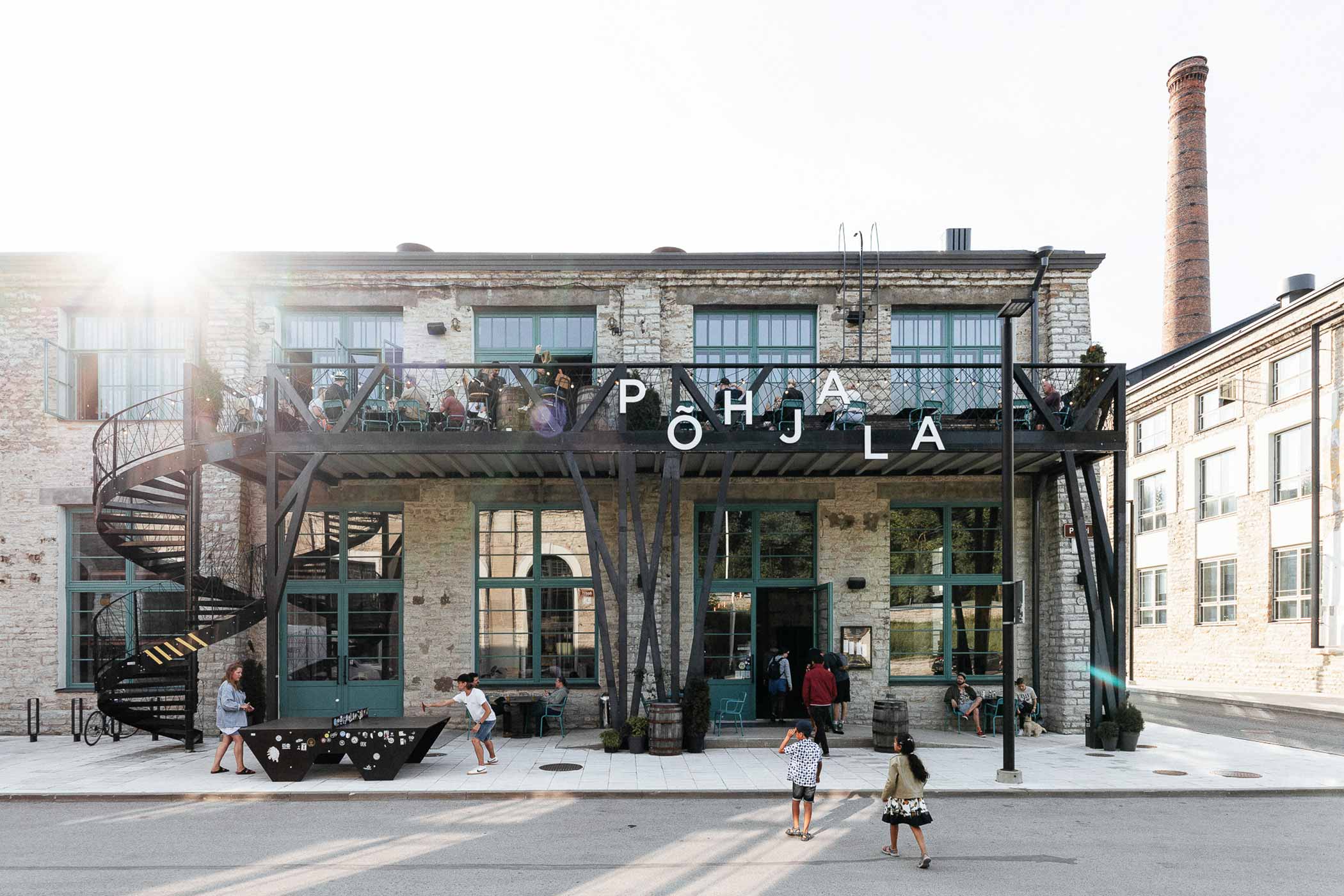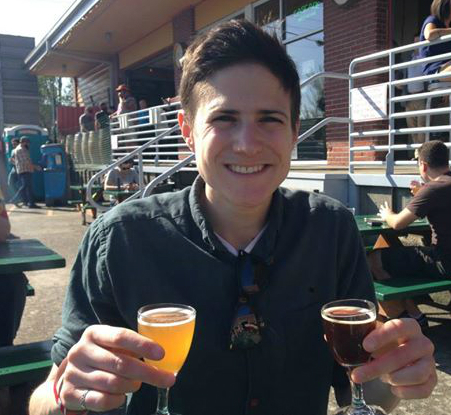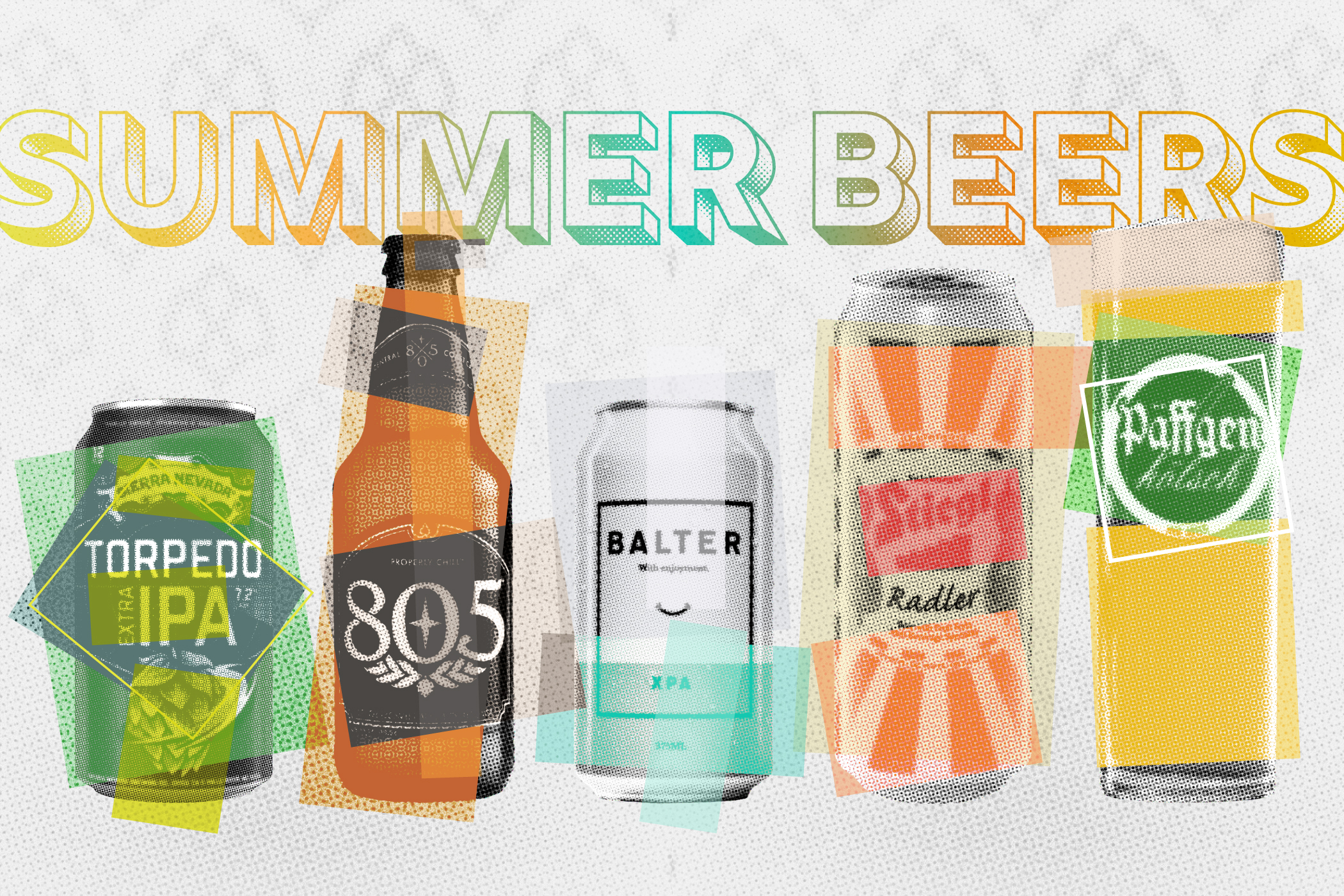Shop
Beer, Birch, and Baltic Grit: The Legendary Evolution of Põhjala
A Baltic behemoth.
Like This, Read That
At Salama Brewing, Lightning Does Strike Twice
The 11 Best Places to Drink in Helsinki
Hop Culture traveled to Tallinn, Estonia with Brewtopia, which gives folks the backstage pass to breweries, pubs, and beer-centric restaurants in countries all over the world! Want to travel to these places like we did? Check out Brewtopia’s upcoming beer trips!
The letters seem to dance in front of my eyes, waving up and down like a flag in the wind.
P-Õ-H-J-A-L-A.
Among the sand-colored exposed brick and teal-rimmed windows, the word stands out.
Named after a magical and mysterious place from Estonia’s national epic, Kalevipoeg, Põhjala roughly translates to “Northern land.”
“It’s a great mythical place in the north,” says Põhjala Head Brewer Martin Vahtra, who agreed to cycle into Tallinn on a Saturday morning to show me around the brewery.
“Põhjala is even further north than us,” laughs Põhjala Co-Founder Peeter Keek. “It is dark; it is unknown; it’s a little bit mysterious and dangerous.”
It’s a strong name, a fitting one for an Estonian brewery built into an old Soviet naval yard that once made submarines for the Communist country.
Occupied by the Soviets for over fifty years, Estonia didn’t achieve independence until the early 1990s. During that time, the Russian government closed Tallinn’s seafront to the public. “Basically, they didn’t want us to get any ideas of freedom,” says Vahtra.
Since 2011, Põhjala has redefined what beer can be in Estonia. The brewery’s unique over-the-top stouts, barrel-aged barleywines, and easy-going lagers and sours are the ultimate symbols of freedom—of expression, creativity, and ingenuity.
But most might not know just how far Estonian craft beer has come.
As Põhjala’s head brewer takes me inside, I notice concrete everywhere—the color is one note and the materials raw and exposed. Põhjala has added its own features, pops of color, neon signs, prints and plants, and lots of ducks (more on that later). Now the taproom is like a post-independent industrial chic.
But vestiges of the past remain. As we pass between the retail space and the stairs leading up to the taproom, Vahtra points out a thick, mottled door. Standing resolute, this blast door is two to three inches thick. And it’s not the only one, Vahtra says there are parts of the brewery where you can still sometimes “lose your cell signal.” These are protected architectural anomalies that Põhjala can’t legally remove. In one corner, an iron ladder that leads to nowhere; up on the ceiling, cranes no longer used.
These structures stay intact—symbols of Estonia’s clash of past and present. And Põhjala, through beer, an emblem of its future.
Yet most of us probably couldn’t even point out Estonia on a map (I know I couldn’t until I recently traveled there), much less recount its history.
Known for being one of the greenest countries in Europe (with over fifty percent of its land covered in forests), the birthplace of Skype, and a love of saunas, Estonia blends a history of communist occupation with a contemporary future in culture, technology, and, of course, craft beer.
Just a little bit bigger than the state of Massachusetts and about the same size as the Netherlands, Estonia may be physically small, but the heart of its people, food, and beer beats beyond its borders.
And while you may not yet be able to point to Estonia on the globe (look and educate yourself), arguably one of the best breweries in the world, Põhjala, is putting this tiny country on the craft beer map.
A Series of Fortunate Events
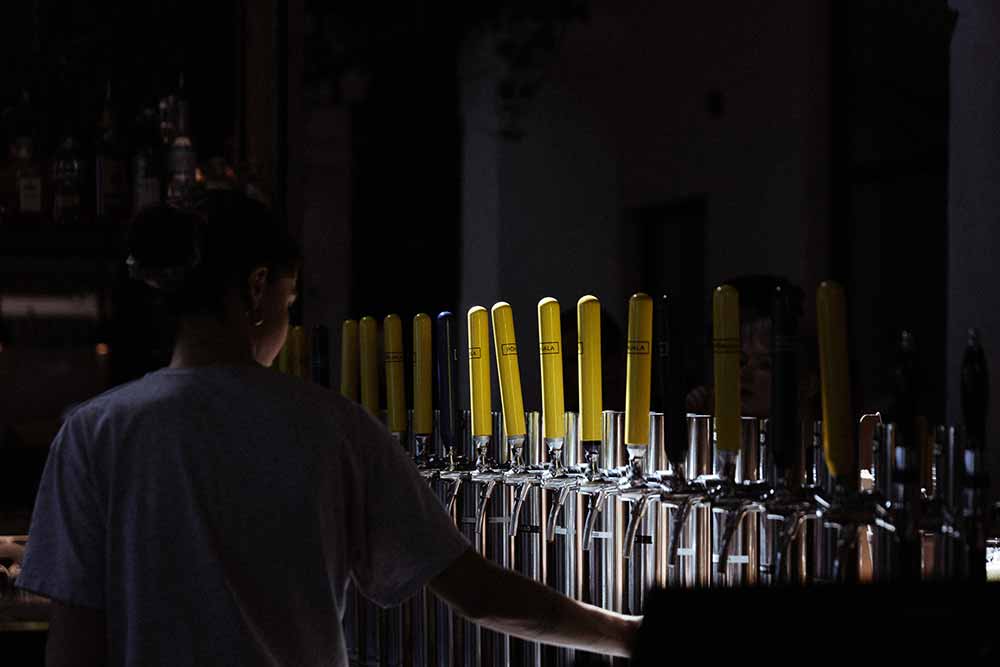
Photography courtesy of Joosep Kivimäe
In 1991, Estonia achieved independence from the Soviet Union/Russia, ending a fifty-one-year period of occupation.
And while beer-making had always been a significant part of Estonian culture, even in the years after its independence, only subpar lagers continued to thrive.
“For such a long time, the Estonian beer market had just been basically dominated by two macro breweries,” Vahtra explained to me.
That is, until Põhjala Co-Founders Enn Parel, Peeter Keek, and Gren Noormets somewhat naively decided to open a brewery.
Born in 1975, Keek spent fifteen years in occupied Estonia before the collapse. “I had a few sips of beer before that,” he admits. “Growing up here in the North, you were always influenced by beer, even if those were only a few shi**y brewers during the late years of Soviet times that I remember.”
By the mid-2000s, exports reached the shores of the Northern European country.
And Parel, Keek, and Noormets had grown and traveled.
A distributor for the culturally iconic shoe company, Vans, Keek flew to California twice a year. There, in a Marriott hotel lobby bar, he tried Stone IPA for the first time.
A self-proclaimed foodie and established entrepreneur, Keek heard the opportunity knocking.
“They saw craft beer booming elsewhere and felt like it was something that Estonia just didn’t have,” says Vahtra.
With just a bit of homebrewing but a lot of drinking experience, the trio traveled to Fraserburgh, Scotland, the home of BrewDog.
At the time, the Scottish brewery had a lot of influence on continental Europe, so the Põhjala co-founders wanted to see what they could learn.
After touring the brewery, they went to the BrewDog bar in town. “It was a super busy night,” Keek recalls. And while they’d been told BrewDog Founder James Watt was in Brazil for a conference, Keek spied him behind the bar. “I rushed through people…[because] I wanted to introduce myself,” says Keek, who proposed to Watt that he hire him as an intern to work for free.
Luckily, it was Easter weekend and BrewDog was short-staffed as people traveled home to celebrate the holiday. “That same night, some Estonian dude asked him, ‘Can I work for free?’” laughs Keek. “Obviously, he took it.”
The next day, Keek showed up at 6 am for a two-week unpaid internship.
A ‘Piano Player’ for Põhjala
“They were blasting death metal,” Keek tells me of his first day at BrewDog. It didn’t take long for him to realize their little homebrewing experience wouldn’t cut it if they wanted to open up a real brewery. They needed to find a professional brewer.
There amongst the raw machismo, questions about Estonian girls, and headbanging music, “I met a piano player,” says Keek metaphorically.
Then BrewDog Lead Brewer, Chris Pilkington, stood out. “He was the only one asking questions about why I was there,” says Keek.
By the second or third day, Pilkington invited Keek back to his apartment. “He showed me a big trunk with an old whiskey collection,” laughs Keek. “It was almost like a love story.”
Keek didn’t intend to smuggle himself into BrewDog and steal a brewer, but Pilkington didn’t fit in with that death metal crowd. “I would say I took the part that would have fallen out anyway,” says Keek.
Three months later, Pilkington came to Tallinn and brewed his first beer with Keek (he’d later move and stay as Põhjala’s head brewer for nine years).
Originally called San Diego Session IPA, today, Põhjala still makes that beer—Uus Maailm. Keek describes it as a wheat IPA, sort of a cross between a West Coast IPA (Galaxy and Mosaic hops) and a wheat beer with oat flakes, wheat, barley, and unmalted oats.
“That first beer was [Chris] showcasing what he can do,” says Keek.
But while a West IPA may have secured Pilkington’s future in Tallinn, it was a totally different dark style that cemented Põhjala’s fame in the Baltics and beyond.
A Baltic Porter for a Baltic Brewery
“Sorry to correct you, but it’s Öö like one big letter,” Keek gently encourages me when pronouncing the brewery’s flagship Baltic porter.
We’re catching up on Skype several weeks after my trip to Tallinn. Keek sits cross-legged on the chair behind his desk, getting more and more excited as we talk about Põhjala’s early beginnings.
I try again, rounding my mouth to make one short, choppy sound that’s almost like a gym grunt—uuh (see pronunciation here).
Much better he tells me with delight.
Öö, translated in English to night, is considered Põhjala’s first beer, gypsy brewed in December 2012 before being officially released in February 2013.
“That was the start of Põhjala,” Keek states reflectively, pausing and taking a sip of Pime Öö, a barrel-aged version that’s brewed for the longest night of the year.
Like most beers at this Estonian brewery, there’s a story.
After Keek’s internship adventure in Scotland, the trio spent a night in London in a bar whose name he can’t remember.
What he does remember, though, is one fateful conversation.
While passionately talking, Keek kept bumping into the guy next to him. “I speak like a Roman,” he explains with a laugh. Eventually, the two struck up a conversation. “When they heard that we are from Estonia and about to open a craft brewery…they told me you have to open with a Baltic porter,” says Keek. “That was a defining moment.”
Perhaps unsurprisingly, the Baltic porter has a history in the Baltic states.
Although a product of London in the 1700s, the porter became popular across the region.
However, in the early 1800s, during the Napoleonic Wars, Napoleon Bonaparte cut off trade routes between England and the Baltic states—Latvia, Lithuania, and Estonia. So these places adapted, developing their own version of the style with one crucial swap: ale yeast for lager yeast, a necessity given the chilly climates.
“With seven to eight months of the year being a rather cold temperature,” Keek explains, “dark beer is comforting.”
The first Baltic porter is very close to Keek’s heart. And not just because it was Põhjala’s first child, which made a name for the brewery. “It represents a lot of, I would say, Estonian soul,” he says. “It’s not too soft; It has its edges, but it has a lot of flavors in the layers. … The darker beer carries on the traditions and the essence of Estonia.”
From London to Estonia to London and back again to Estonia….
Sore Wrists, Sold-Out Beers, and Skype
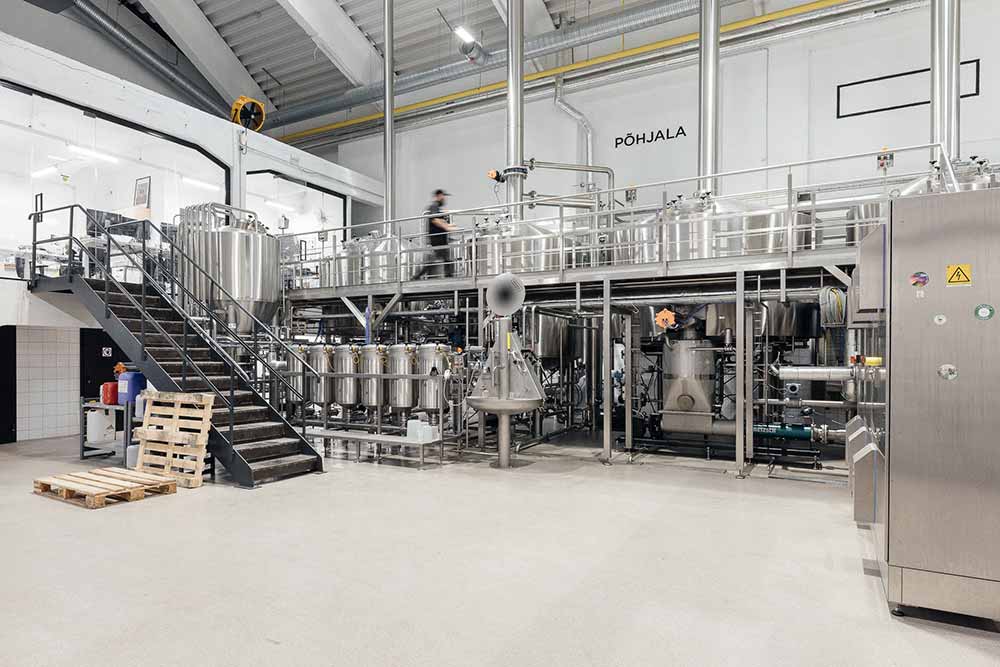
Photography courtesy of Joosep Kivimäe
In 2012, Põhjala began brewing beer as a nomadic brewery, hand-filling and releasing 700 bottles of Öö.
“I remember my hand aching,” says Keek, who filled all the bottles himself.
But the beer sold out in less than twenty-four hours. “We were stunned,” says Keek.
The next year, they released seven or eight more beers. And the same thing happened.
They all sold out.
“We felt we were onto something,” says Keek, who, when I ask him about the early days, responded without hesitation, “It was f**king crazy!”
Because while the trio was stunned by their homespun success, they were absolutely dumbfounded at their recognition abroad.
People called from Sweden, from Germany, all wanting Põhjala’s beer. “Then it just snowballed,” says Keek.
Before opening their own brewhouse in Tallinn’s Nõmme district in 2014, the three guys added a fourth partner.
“We heard the ex-CEO of Skype was opening a craft brewery, and we were short of money,” Keek explains, bluntly calling the guy.
That guy, Tiit Paananen, ditched his own plans to open a brewery and became Põhjala’s fourth co-founder.
The irony, Keek says, is that Paananen had the most homebrewing experience of them all.
But where Paananen really played a significant role is with Põhjala’s expansion to their current location in Port Noblessner in 2018, leveraging his connections in the tech industry for financing.
The historical shipyard reached out to Põhjala’s co-founders first. “We heard that you’re this cool Estonian brewery looking for a new home,” Keek says they told them.
The brewery co-founders found the buildings in various states of disrepair, with missing roofs and walls full of water. In some places, “they actually had to go in with small canoes,” laughs Vahtra. “It was almost like a weird type of urban exploration!” Restoring the building to make it inhabitable took two years.
Photos of the Past, Fermentations of the Future
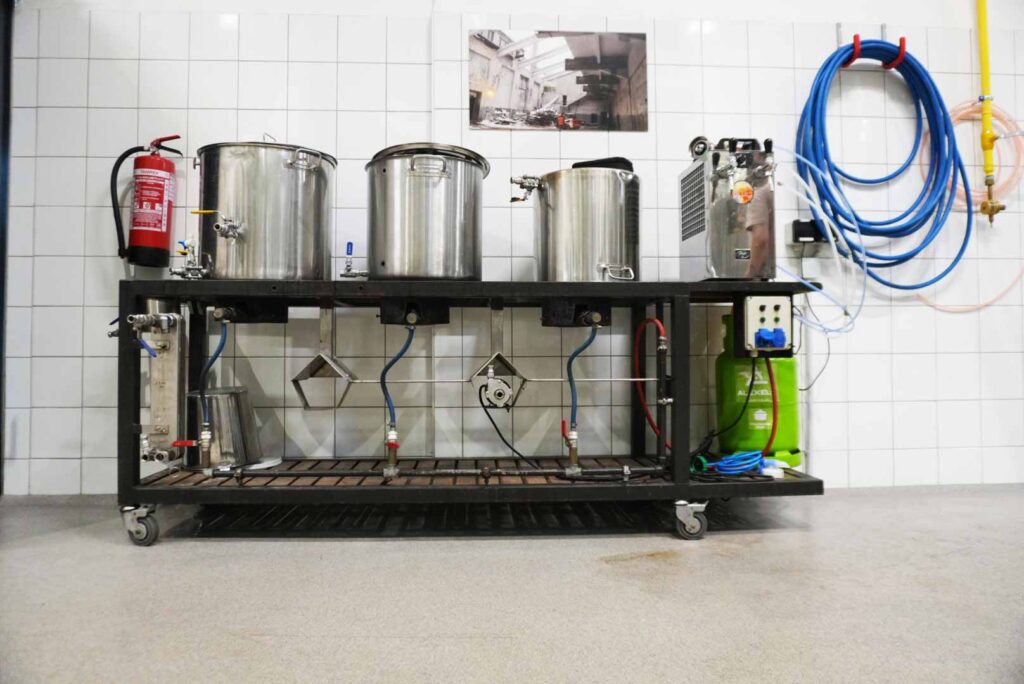
Photography courtesy of Grace Lee-Weitz | Hop Culture

Photography courtesy of Grace Lee-Weitz | Hop Culture
Once through that first blast door, Vahtra steers me to the left into the brewhouse. Vahtra takes me through the entire building, pointing out photographs the team keeps around of what the facility used to look like.
One sits above a sort of cobbled-together pilot system, which the three co-founders used in the early days of the company. “It’s seen better days, but it’s the exact system,” says Vahtra. “Well, it’s probably missing one or two pumps.”
But amidst the older relics and historically preserved architectural oddities, you’ll also see the gleam and glint of polished steel.
That’s the 50-hectoliter four-vessel German brewhouse. In contrast to the “pilot system,” the modern machinery appears gargantuan, occupying one entire side of the warehouse—a system of catwalks, tanks, pipes, and valves.
Vahtra proudly shows off Põhjala’s bread and butter along with some of its fanciful flourishes. A mash kettle with a vapor condenser recycles the steam generated to make hot water, conserving energy in-house. The process means the system also doesn’t produce the typical baking bread smell you’d get at most breweries. A conscious and considerate step Põhjala took for its neighbors.
A series of six small vessels that Vahtra calls “hop dosers” can add hops, as well as different spices, salt, seeds, and even chocolate, to the wort.
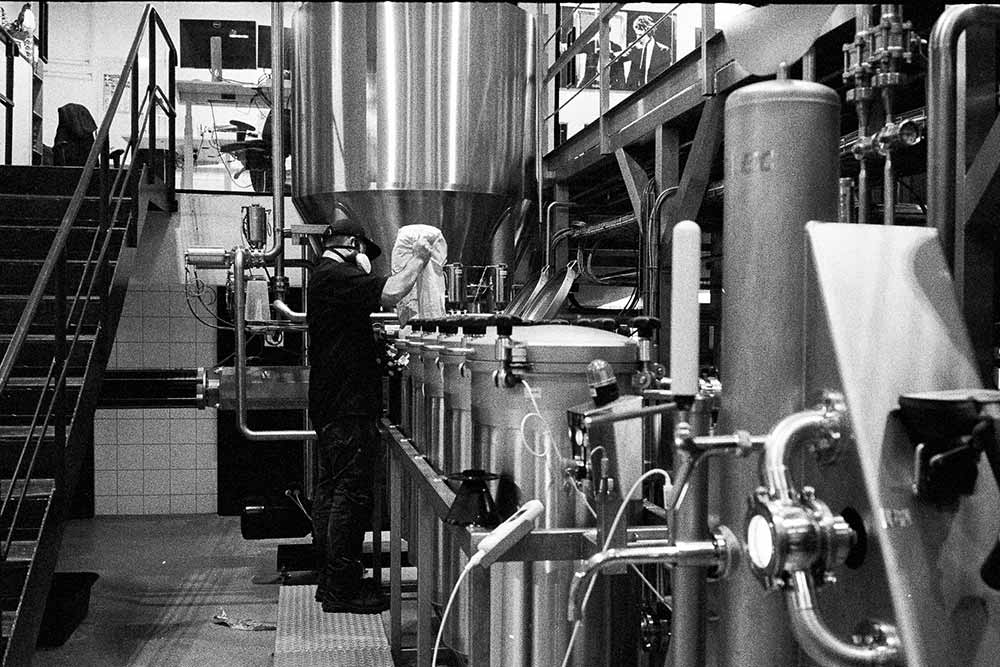
Põhjala’s hop dosers | Photography courtesy of Joosep Kivimäe
A fifth uncommon vessel, which Vahtra calls an “oversized hop rocket,” can infuse the beer with everything from juniper branches to raspberries and “make sure that nothing ends up in our heat exchanger later on, so it gives us a possibility to do all these different interesting additions during the boil.”
When I asked if it had a name, Vahtra responded jokingly, “Hopnik!”
Which happens to be the official German name for it, but reminded me more of a portmanteau of “hops” and ”Sputnik,” which I thought was pretty fitting for the metal contraption in front of me.
In the room over, a veritable hall of fermentation tanks stands resolute like soldiers. Most are 100 hectoliters (10,000 liters), according to Vahtra, except for a few 200-hectoliter (20,000-liter) tanks at the very end reserved for lagers. “Just because it takes a while to actually lager,” says Vahtra. “Our lager cycle is at least forty-five days.”
Not long ago, the industrious brewery realized it had outgrown its space. “So we called up the landlord and asked, ‘Hey, about the other side of the building?’” laughs Vahtra.
A Back Corner of Barrels
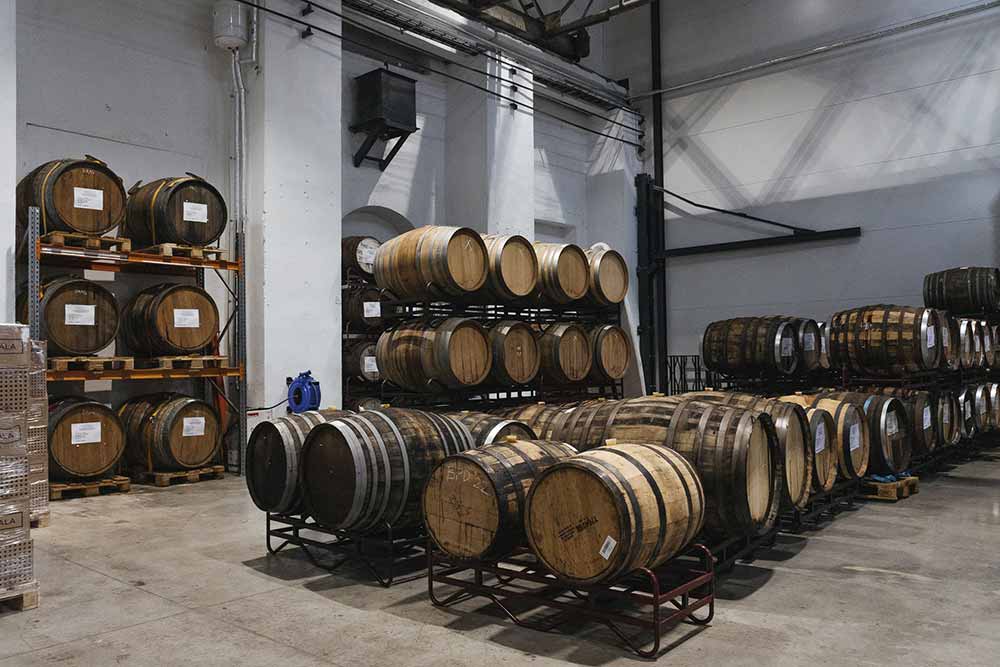
Photography courtesy of Grace Lee-Weitz | Hop Culture
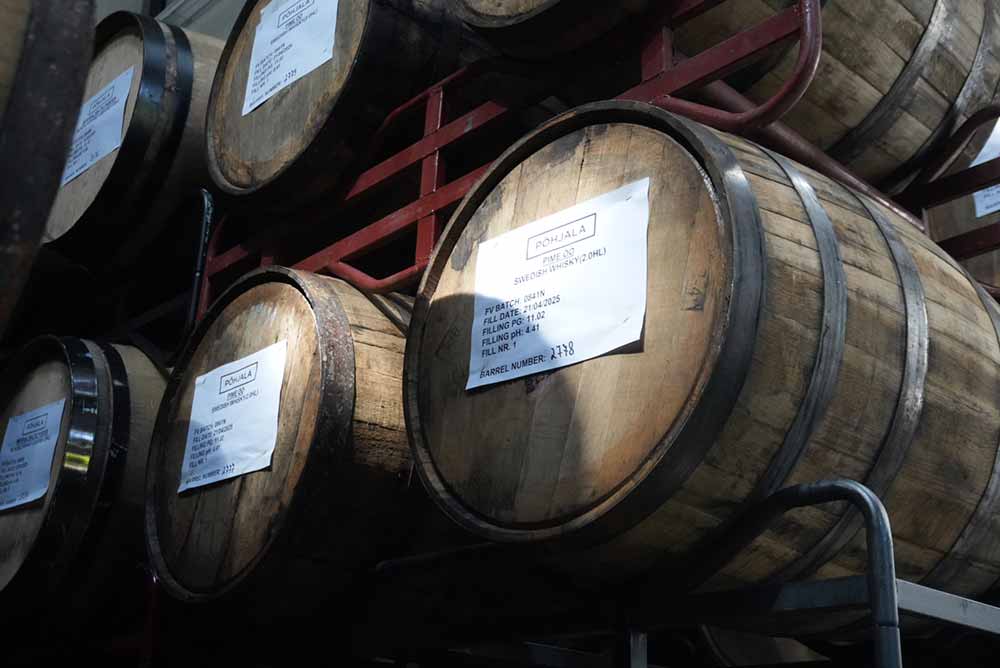
Photography courtesy of Grace Lee-Weitz | Hop Culture
Today, Põhjala uses the extra space wisely. In the back corner, you’ll find what might be considered the backbone of the brewery, a couple hundred hand-sourced barrels filled with beer. (Vahtra says they’re actually “low-stock at the moment.”)
Peek at the brewery’s Untappd page, and you’ll find its highest-rated beers often from its Cellar Series, an ongoing project showcasing dark beer in bold ways through as many barrels as the brewery can get its hands on.
For instance, Pime Öö, which wasn’t Pohjala’s first barrel-aged beer, but their first big hit. A 13.6% ABV imperial stout aged in Pedro Ximinex sherry barrels that came out as just “a fabulous liquid,” says Keek, who still remembers the sensation he had when he had his first sip of that batch.
“It’s something that’s very near and dear to my own heart,” agrees Vahtra of the brewery’s iconic Cellar Series and one of the reasons he joined the brewery. “They are always such passion projects.”
While Põhjala once used a barrel broker, today Vahtra personally sources all of the brewery’s wooden vessels.
He draws inspiration from visiting cocktail bars, traveling, and staying alert. “If I find a drink, distillate, or dessert wine I really love, I’ll reach out to the [producer],” says Vahtra, who often just cold emails people, trying to explain that he’s from a brewery in a small country called Estonia.
Which has led to a single-malt imperial stout in Swedish single-malt whiskey barrels, an imperial Baltic porter in French black currant liqueur barrels, and an imperial Stout brewed for the longest night of the year in Pedro Ximénez sherry barrels (a lovely raisiny cherry, according to Vahtra). The Estonian brewer also points out Ukrainian plum liqueur barrels, Turkish apricot brandy barrels, and ten-year-old German whiskey barrels.
“You find these bits and pieces which have unique stories and flavors on their own,” says Vahtra, noting most of the producers they now work with are small enough to not only be exclusive, but also to have their own remarkable stories.
When Vahtra got his hands on some Finnish rye whiskey barrels, they were so fresh that they still had a ridiculous amount of whiskey in them. “To the point where we asked ourselves, should we pour some out!?” Vahtra says excitedly. “The wood was incredibly fresh and wet still.”
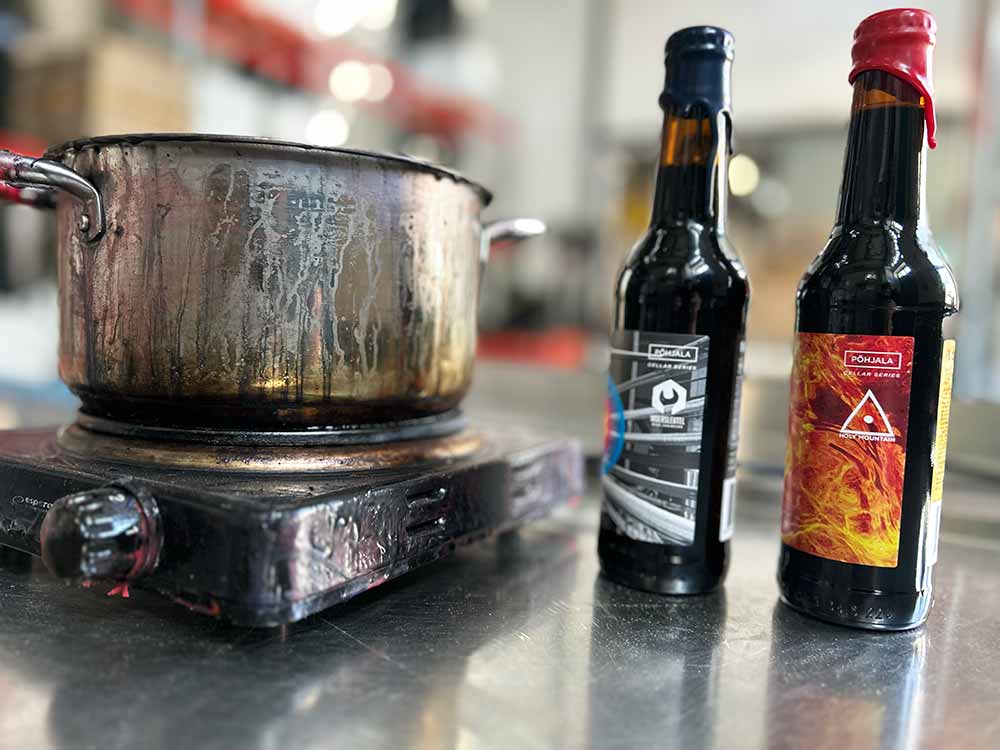
Photography courtesy of Grace Lee-Weitz | Hop Culture
Walking back, Vahtra points to a little steel table with an induction burner and a pot. Here in charred kitchenware, the size of something you’d make soup in at home, Põhjala melts the wax it uses to hand-dip each of its Cellar Series bottles. “We dip it one by one,” says Vahtra, who notes that one person typically handles a 10,000- to 20,000-bottle batch all by hand eight to ten times a year. “It’s actually a very robust system. Just this seasoned pot and a burner.”
As we head towards the front, Vahtra points out an unassuming metal filing cabinet covered top to bottom in vibrant, instantly recognizable, multicolored labels.
All the work of one man, Vahtra assures me. “It’s actually one of the founder’s best friends’ sons, Marke Saaremets,” he says.
Today, Põhjala’s bright colors and wildly fermented freedom differ significantly from the uniform lagers of a former communist-controlled country.
In a place brimming with beautiful forests, medieval old towns, and growing tech hubs, Parel, Keek, and Noormets saw potential.
They saw a way to tell the world about the country they loved through their beer.
Brewing a Baltic Memoir
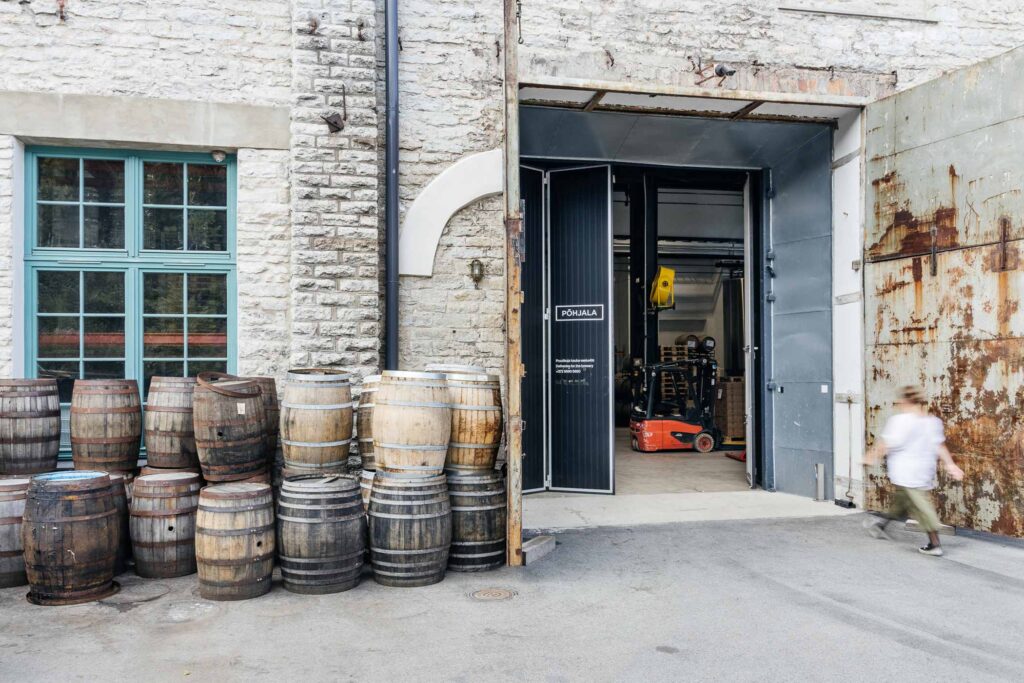
Photography courtesy of Joosep Kivimäe
Although Põhjala represents the future of craft beer in Estonia, the brewery isn’t afraid of its roots.
In fact, they embrace them.
“I’m not just the ambassador of Põhjala beer,” says Keek, “but I’m also the ambassador of Estonia.”
What do you think of when someone says Switzerland? Probably chocolate and cheese, right?
How about Norway? Salmon?
Or England? Maybe it’s fish and chips.
“When you think of Estonia,” says Keek, “you don’t know what to think.”
Põhjala wants to change that.
“We’re really trying to get more accessibility, really clean, almost like Nordic-style flavors and trying to incorporate as much of the surroundings and take inspiration from that, and we’ll put it into beer as much as possible,” says Vahtra, who joined the brewery by what he calls a “happy accident.”
The homebrew hobbyist began working at a coffee shop/gallery/craft beer shop while studying transport and logistics at Tallinn University of Applied Sciences before taking a full-time job as an assistant brewer at Tanker.
With plans to move abroad to keep brewing, Vahtra decided to reach out to Pilkington about this new brewery project he’d been hearing about. “I asked him if he needed any extra help with anything,” says Vahtra. “They found a place for me.”
Working production from 7 a.m. to 5 p.m., Vahtra would then run a full shift in the upstairs bar. “Just enough time to get some sleep and come back,” he laughs.
Within four months, Põhjala hired Vahtra as a full-time brewer, and when Pilkington left to open his own brewery, Vahtra assumed the role of head brewer.
Today, he ensures Põhjala’s beers straddle that line between homage and new image.
#saunalife
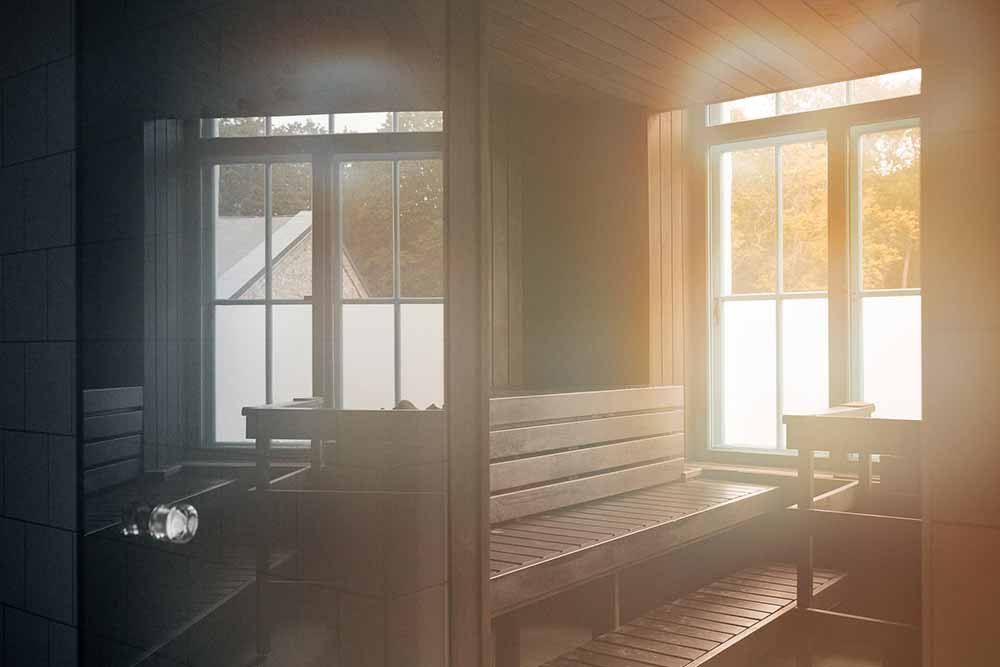
Photography courtesy of Joosep Kivimäe
A delicate storyline you can read through Kask, a light, easy-going lager infused with birch whisks that’s inspired by Estonian nature and sauna culture.
“That’s our religion,” Keek says enthusiastically.
As we walk out of the brewhouse, Vahtra goes to pour me a flight of beers. As we head up the cement stairs to the taproom, he tells me he needs to get a glass of Kask in my hand. Out of all of Põhjala’s beers currently on tap, he’s most excited to show me this one.
And for good reason. It’s the essence of Estonia in a glass.
Vahtra sources his tree-bark whisks from a local farmer who collects young offshoots from a birch forest in late spring, ties them up into bunches, and dries them.
“We infuse them into the brewing water,” says Vahtra, who leaves the whisks overnight in the hot water tank before transferring the water over for mashing in the morning. The technique ensures that the birch flavor remains present throughout the boil and fermentation, carrying through nicely to the finished beer. “You get a really clean, drinkable beer that’s perfect for both saunas and just enjoying everywhere!” says Vahtra, who explains that sauna culture is huge in Estonia.
Pretty much every Estonian has a small sauna at their summer cottage. At home, most Estonians make their own birch whisks. “As you’re heating up the sauna, you leave them in the water to soak,” says Vahtra. “They make the water more aromatic, but also the birch a little softer. As you’re sweating in the sauna, you lightly tap yourself with the whisks to make the blood flow and to reinvigorate yourself.”
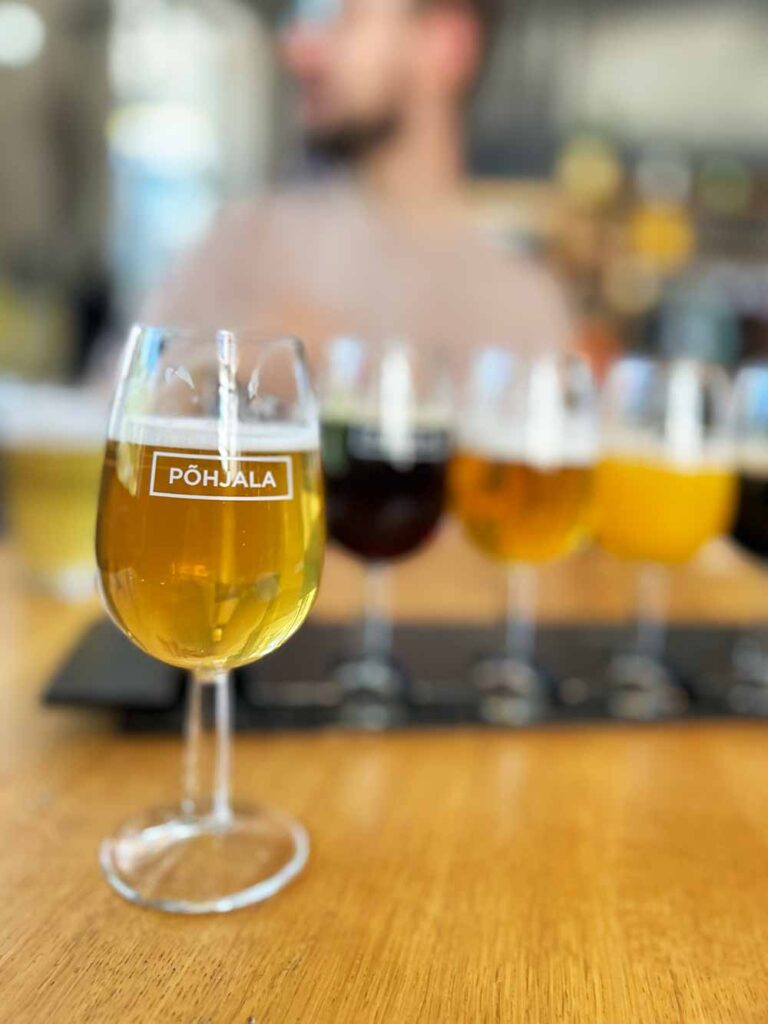
Kask birch-infused lager | Photography courtesy of Grace Lee-Weitz | Hop Culture
While you won’t find birch whisks available at Põhjala’s taproom, you will find a sauna. Every Monday night, when the taproom is closed, the production crew lounges in the hotbox with a few beers. “We just chat and get ready for the upcoming week,” says Vahtra. Customers can also rent out the sauna (just don’t add beer to the stones, Vahtra cautions, as it could burn you).
Vahtra hopes Kask evokes a sense of nostalgia among people from the Nordic and Baltic regions. “It’s almost an eureka moment, almost like, wow, this is exactly how I remember it,” says Vahtra. “It brings me a memory.”
That’s a constant theme through all of Põhjala’s beers.
One series, inspired by the forest, features different berries and herbs.
Even food plays an important role.
Rye Not?
In Rukkirääk, the Estonian name for a small bird called a corn crake that primarily inhabits rye fields, Põhjala pays homage to Estonians’ affection for rye. “People eat rye bread daily,” says Vahtra, who occasionally even makes his own rye bread at home. “So we created a beer that’s almost like liquid bread.”
Looking to hit a flavor expression of rye crust—caramel-y, a bit toasty, and with deep grain character—Vahtra added caramel rye malt, chocolate rye malt, a roasted rye malt, and a type of Estonian fermented rye malt (the same used in Estonian breads) to the base.
“We basically used rye in every type of way that we possibly could,” he told me.
What at first appears dark shimmers with a deep ruby red when held up to the light. Vahtra calls this a “nice in-between beer,” not something you go to every day, but a good intermission between hoppy beers or a malty showcase that’s not as heavy as a porter or a stout that you can enjoy once or twice.
“I feel like it’s an overlooked beer,” says Vahtra. “Like the Estonian rye doesn’t say much to anybody, but it has such deep roots in the culture, culinary arts, and just people’s hearts.”
Vahtra explains a common phrase in Estonia used as a local greeting to people dining, jätku leiba. “It’s basically an Estonian counterpart to bon appétit,” he says, noting it roughly translates to “may there be bread.” “Bread and rye have always been profoundly important in Estonian culture and cuisine.”
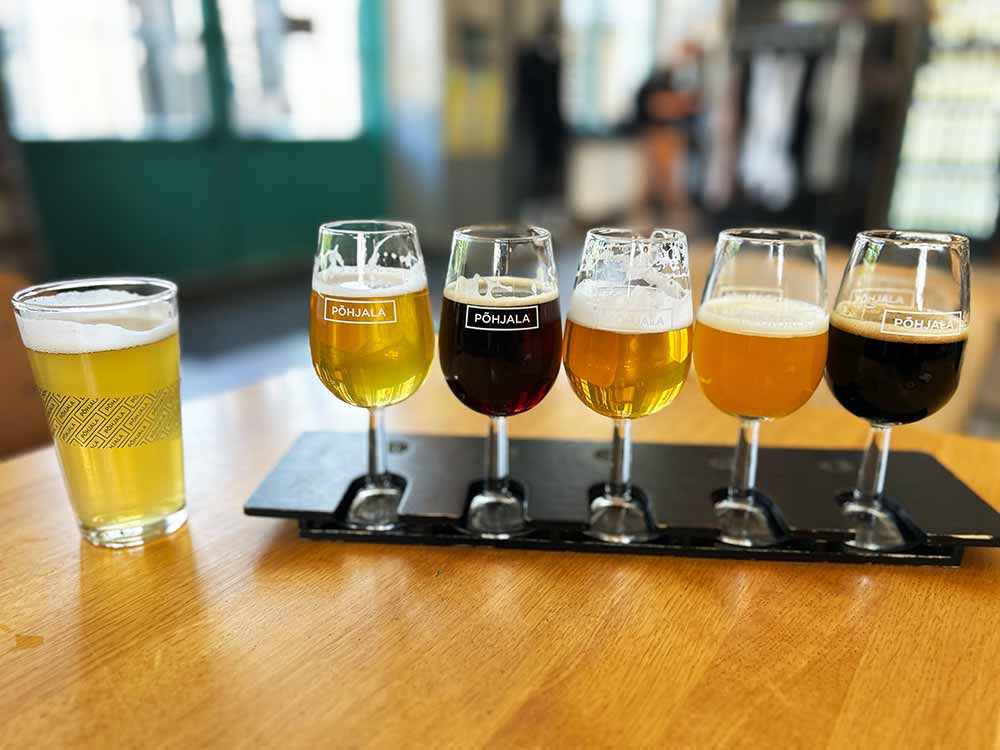
Photography courtesy of Grace Lee-Weitz | Hop Culture
Sours After Soviets
Literally housed in an old Russian naval yard, Põhjala isn’t afraid to share its country’s Soviet influence.
Põhjala’s sour series, something they’re well known for, redirects the country’s occupationist roots.
During Soviet rule, beer quality was incredibly low.
“There was a common joke,” says Vahtra, “that the beer turned sour when you handed it to someone over the fence.”
For most Estonian drinkers, sour always meant shitty beer. Vahtra says Põhjala wanted to reverse this “generational trauma.”
Which hasn’t been easy.
The brewery’s first sour, a Berliner weisse called Kreuzberg, named after a district in Berlin, flopped.
“I think half the beers in a single night were actually returned because people thought the beer had soured,” laughs Vahtra.
Today, however, Põhjala has turned the tide, with these easy-going sours now some of the brewery’s most popular beers.
The brewery’s sour series is meant to be accessible, “bridging the gap between what beer can even be and what people think about beer,” says Vahtra. Take Sun City, for example, a summery sour with passion fruit, mango, and peach puree.
“This is an easy introduction to the world of sour beers,” says Vahtra.
On the hoppier side, Põhjala’s Värkse, which in Estonian means fresh, is a wet-hop lager that showcases a different hop each year. For instance, this year’s version featured Most from the Czech Republic. “It’s fairly new,” says Vahtra, noting drivers take shifts to get the hops to Põhjala within twenty-four to twenty-six hours to keep them as fresh as possible. “It has really interesting flavors of wild strawberries.”
While Estonia does grow hops, it’s mostly just a private endeavor. During the Soviet occupation, Estonians were encouraged to grow hops for medicinal purposes. “If you grow hops and put the cones in your pillow, you will sleep better,” says Vahtra, explaining that, to this day, a lot of summer cottages and older houses still have super old hop plants in their back garden. “Even my parents’ house that my grandparents built, every summer, the whole fence gets overgrown with wild hop plants.”
When I ask why he hasn’t used any Estonian hops in Värkse yet, Vahtra replies practically that there just aren’t enough and no big producers in Estonia. While he could source about ten kilograms from his backyard stock, he would need four or five hundred kilograms to make a commercial beer.
From Estonia With Love (And Whiskey Barrels)
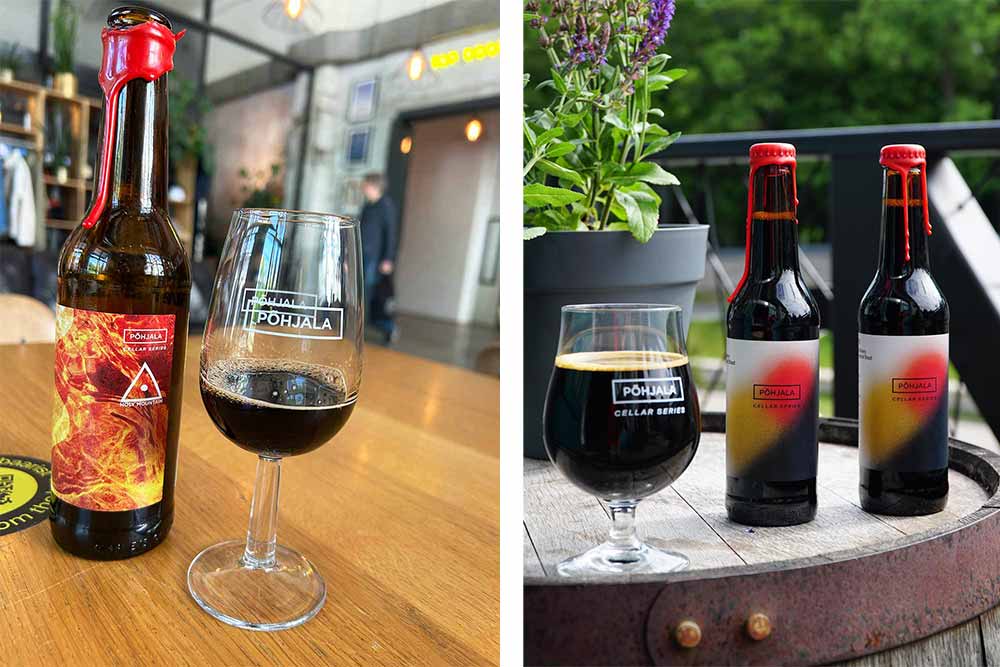
Photography courtesy of Grace Lee-Weitz | Hop Culture and Põhjala
Before I leave, Vahtra sets a bottle down in front of me.
A recent collaboration with Holy Mountain, A Ton of Honey features one ton of Estonian honey—basically, Vahtra bought an entire year’s supply from his local beekeeper.
The mixture of heather, buckwheat, and wildflower honey produces an incredibly intense braggot that Vahtra pairs with a stout base and then ages in Madeira and Ola Rosa barrels that “have really nice tannin and almost a touch of acidity,” says Vahtra. “It balances the sweetness and floralness.”
To understand Põhjala’s success, just look at the breweries they collabed with; it’s a veritable Met Gala list of who’s who—LERVIG, Moersleutel, Frontaal, Pühaste, Verdant, Ārpus, To Øl, and Northern Monk, just to name a few.
The former, a yearly staple that brings together the Swedish giant and the enormous Estonian.
“Basically, us having a hike together or us going to each other’s summer cottages, cooking for each other, having late-night chats,” says Vahtra, “and we just happen to make a beer at the same time.”
The most recent one, Faraway Friends, was “an idea that’s been itching away at our soul,” shares Vahtra—aging beer in European whiskey barrels.
The imperial stout, featuring Uganda vanilla beans, chocolate malt, and coconut sugar, ages in those Finnish rye whiskey casks.
Beers like these are “always a cause for celebration,” says Vahtra, “pushing new ideas, pushing new boundaries.”
Everything Is Bigger in…Estonia?
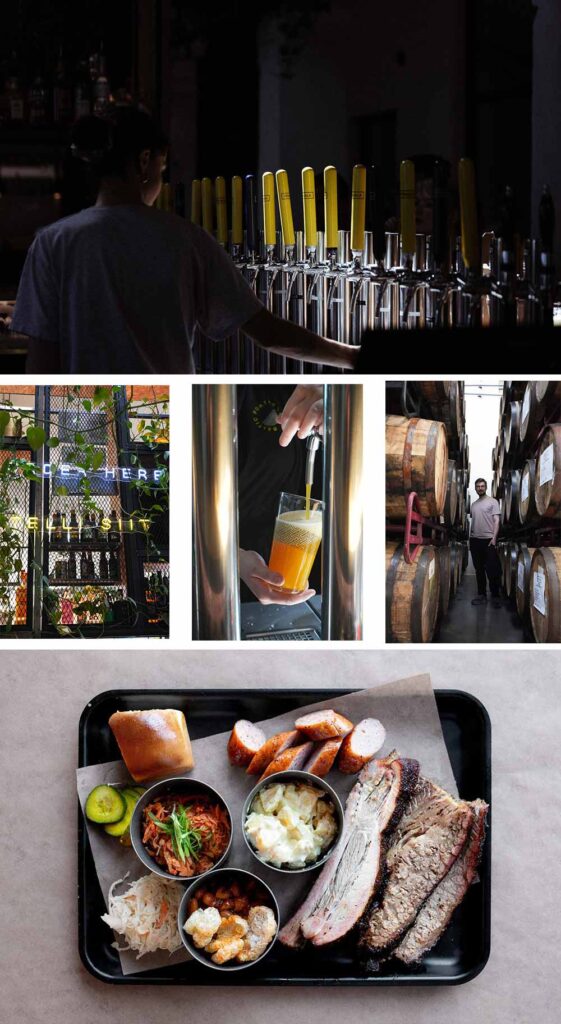
Photography courtesy of Joosep Kivimäe (top), Renee Atruvo (bottom), and Grace Lee-Weitz | Hop Culture (middle)
While in Tallinn, I visited Põhjala’s taproom twice. Once for lunch. Each time I bumped into a crowd around the island bar, jostling to get a pour of Öö, that original Baltic imperial porter that remains a core beer to this day.
Elegantly stemmed glasses are filled for tasting flights, featuring full-bodied chocolate porters, imperial stouts with coconut and coffee, and even truffle stouts.
Friends spill out onto the upstairs balcony, taking their pints and flights into the Estonian sun.
Inside, you’ll find groups huddled around long picnic-length tables with huge platters of Texas barbecue (who hasn’t said everything’s bigger in Estonia?).
Despite being a very meat-based culture, Estonia isn’t home to much barbecue.
At Põhjala, though, the team respects the craft, flying in Texas barbecue expert Andrew Dilda to teach the kitchen.
Which makes things like Põhjala’s BBQ Feast, including brisket, ribs, sausage, smoked chicken, mac and cheese, coleslaw, bread and butter pickles, elote, and Parker House rolls.
This is comfort food for a place of comfort, where friends gather to enjoy old favorites and new beginnings.
Quack, Quack, Quack
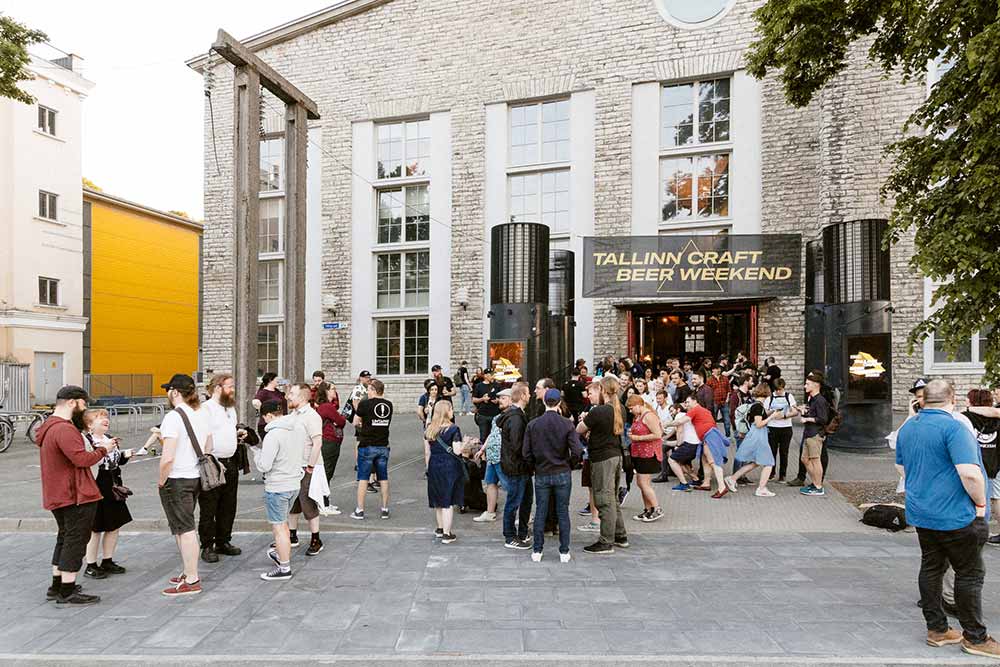
Photography courtesy of Põhjala
Before Keek and I sign off Zoom, I have one last burning question to ask him: What’s up with the ducks? There’s a duck symbol on his grey shirt, and the Põhjala logo behind his desk. In the retail lobby, wooden ducks surround the downstairs bar.
Keek gets a gleam in his eye.
When Põhjala first started, they had a bar right next to the main railway station, a tiny box built by Keek, who had bought a duck at a flea market in San Diego.
For three years, the wooden mallard became a mascot for the bar, which showcased every new Põhjala release.
Two weeks before closing down the bar, someone stole the duck. Despite a big campaign to bring back the soul of the bar, no one returned the quacker. Since then, Keek says he has been “unleashed,” visiting flea markets and antique stores around the world.
“I have one question only,” he says. “Do you have any ducks?”
He showed me his latest purchase, a full white beauty with subtle blue detailing.
Keek says, with a collection of now over thirty ducks, many displayed in Põhjala’s taproom, his passion grew with Põhjala.
For Keek, the ducks have become a symbol of the brewery’s success (and as one of his Chinese distributors told him, the duck is a good symbol, one of prosperity.)
“Bringing prosperity to Põhjala,” I respond.
“No,” says Keek, “Bringing prosperity to Estonia.”
That’s precisely what Põhjala is always about. It’s where the brewery has always pushed to go and where they hope others will follow.
“We don’t have chocolate or cheese,” says Keek. “This is what we have.”
And they’re hoping that one day, you won’t need to ask where Estonia is on a map. Thanks to Põhjala, you’ll just point to it and know.

